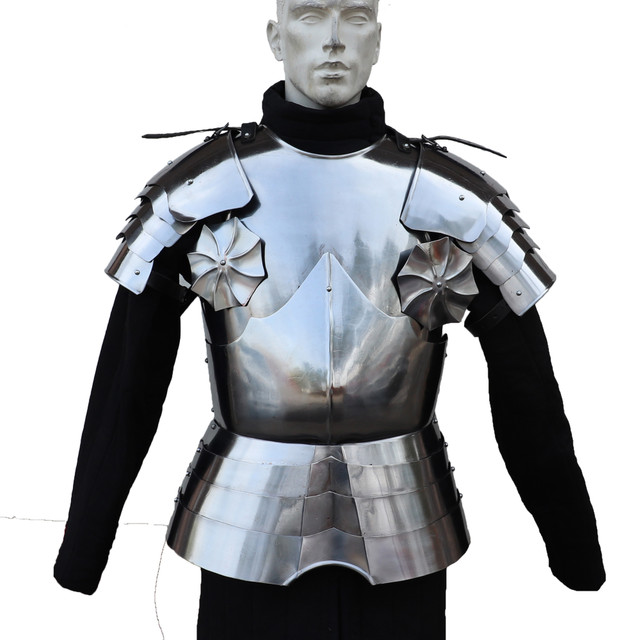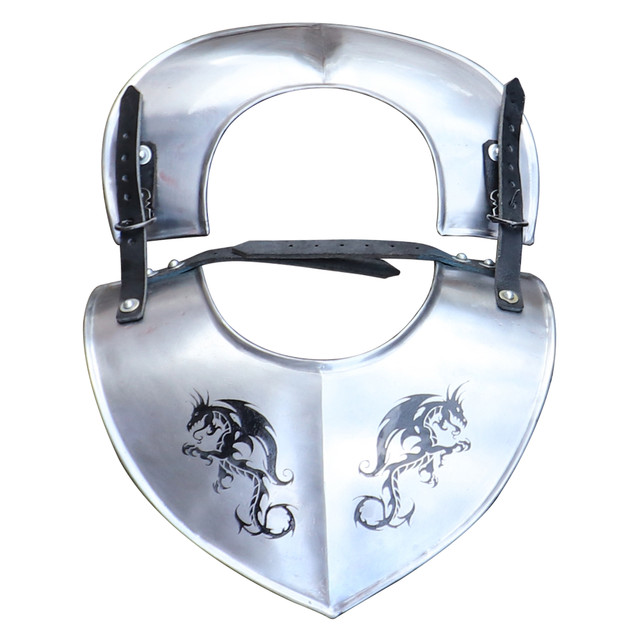Medieval Armor: Functionality vs. Aesthetics
Posted by SwordsSwords on Aug 7th 2024
Medieval armor is often depicted in popular media, from movies to video games, showcasing the iconic look of knights in shining armor. However, the distinction between the functionality and aesthetics of medieval armor is crucial for understanding its historical significance and modern-day appeal. This blog will delve into the differences between functional and decorative armor, emphasizing the evolution, materials, and purposes of each.
Functionality of Medieval Armor
The primary purpose of medieval armor was to protect warriors during combat. This functional medieval armor was designed to withstand the blows of swords, arrows, and other weapons. The development of armor evolved significantly over the centuries, adapting to the changing nature of warfare and advancements in weaponry.
Types of Functional Armor
- Chainmail: One of the earliest forms of armor, chainmail consists of interlocking metal rings. It was flexible and offered substantial protection against slashing attacks.
- Plate Armor: As weaponry advanced, so did armor. Plate armor, made from large metal plates, offered superior protection and became the standard for knights.
- Full Body Armor Suit: This comprehensive armor provided coverage from head to toe, including a helmet, breastplate, gauntlets, and greaves. The full body armor suit was designed to protect vital areas while allowing for mobility.

Materials and Craftsmanship
Functional knight's body armor was typically made from high-quality steel. The forging process was labor-intensive, requiring skilled blacksmiths to create armor that balanced protection with maneuverability. The interior of the armor was often padded to absorb shock and prevent injuries from the force of blows.
Aesthetic Appeal of Medieval Armor
While functionality was paramount, the aesthetic appeal of medieval armor played a significant role in its design. Knights and noblemen often adorned their armor with intricate engravings, family crests, and other decorations to showcase their status and wealth.
Decorative Elements
- Engravings and Embellishments: Armor was often engraved with elaborate designs, including religious symbols, animals, and floral patterns.
- Heraldry: Knights would display their family crests and colors on their armor, making them easily identifiable on the battlefield.
- Gold and Silver Inlays: Wealthier knights could afford to have their armor inlaid with precious metals, adding a layer of luxury and distinction.
Balancing Functionality and Aesthetics
The best examples of medieval armor successfully combined functionality with aesthetic appeal. For instance, a knight's helmet might feature both a practical visor for protection and intricate designs that reflected the wearer's heritage. This blend of utility and beauty made armor not only a protective garment but also a work of art.
The Evolution and History of Body Armor
The history of body armor is a testament to human ingenuity and the constant quest for better protection in combat. From the early use of leather and chainmail to the development of full plate armor, each advancement in armor technology represented a response to the evolving threats of warfare.
Early Armor:
Early warriors used materials like leather and bronze to create rudimentary body armor. These materials offered basic protection and were relatively lightweight.
Medieval Advancements:
The medieval period saw significant advancements in armor design. The introduction of steel and the development of plate armor marked a turning point, offering unparalleled protection and influencing the design of full body armor suits.

Modern Replicas and Reenactments:
Today, functional medieval armor is often recreated for historical reenactments, museums, and collectors. These modern replicas strive to balance historical accuracy with the durability needed for display or use in reenactments.
Conclusion
The distinction between the functionality and aesthetics of medieval armor is essential for appreciating its historical and cultural significance. Functional body armor was designed to protect warriors in battle, evolving over centuries to offer better protection and mobility. On the other hand, the aesthetic elements of armor showcased the wearer's status and identity, transforming it into a symbol of power and artistry.
Understanding this balance helps us appreciate both the practical and decorative aspects of medieval armor. Whether you're a history enthusiast, a reenactor, or a collector, recognizing the differences between functional and aesthetic armor enhances your appreciation for these remarkable pieces of history. For those looking to explore or acquire high-quality replicas, swordsswords.com offers a wide selection of knight's body armor that honors both the functionality and beauty of these iconic pieces.

